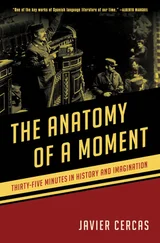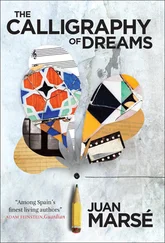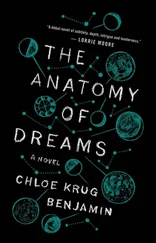The sky became dusky as we drove to the lab. We were quiet on these rides: while Gabe stared at the road, I read through the notes Keller had sent about tonight’s participant.
“Who do we have tonight?” asked Gabe, parking.
We stepped out of the car and walked down the sidewalk beneath a line of trees. Their leaves were dark cutouts in the royal-blue sky.
“The kid,” I said.
Gabe’s jaw set the way it always did when he was thinking more than he wanted to say. We both felt conflicted about Keller’s use of children. Still, Gabe was near-paranoid about criticizing Keller; he certainly wouldn’t do it when we were within spitting distance. Gabe and I had worked with patients as young as fifteen, but we knew that children had been part of Keller’s early tests in Fort Bragg. Tonight’s participant was seven.
At the heavy metal doors, we fell into a single-file line and took out our ID cards. Gabe held his to the square reader next to the doors, which emitted a short, high-pitched beep. The doors opened automatically to allow him inside before closing again. When they shut behind me, clapping together with a rubbery noise of suction, we started down the left corridor.
“Evening,” said Gabe to the Hungarian researcher, who was pushing a young man in a wheelchair across the hallway.
“And to you,” said the researcher. He paused and nodded at us; the man in the wheelchair stirred, his head rolling from one shoulder to the other.
We took the staircase to the basement level of the building and passed three of Keller’s rooms, the doors locked, before we came to his office. It was a windowless bunker at the end of the hall. Inside, there were meticulously organized metal cabinets, a closed door that led to a small closet, and a bulletin board with pinned notes and schedules. Keller sat at a large metal desk, facing away from us.
“Just a moment,” he said.
He was hunched over, taking longhand notes on a yellow pad of paper—he preferred this to the laptops Gabe and I used, claiming it helped him to write more intuitively. He held the cap of his pen in his teeth.
We waited. After a moment, he capped the pen and turned to face us. His eyes went immediately to Gabe’s shirt.
“You’re dirty.”
Gabe set down the cooler with his dinner and leaned against the door frame.
“I was planting a tree.”
“Planting a tree,” said Keller, glancing at me.
I shook my head. “This was his venture.”
“Our neighbor’s a gardener,” said Gabe.
“Well, you can tell him,” said Keller, mildly, “that if Rosemarie Sillman complains that my assistants look like they’ve just buried someone, I’ll be holding him accountable.”
“Her,” said Gabe. “The neighbor’s a woman. You do know it’s the twenty-first century, don’t you? Next thing you know, you’ll be assuming all scientists are men, and Sylvie will have to put you in line.”
Gabe was able to rib this way with Keller; in their relationship, there was always a line being narrowly walked. Over the years, it had become almost familial—something that made me vaguely jealous, even though I knew Gabe had always needed a father more than I did.
“Noted,” said Keller shortly, though he was smiling. “Go on and set up. Room seventy-six.”
It was seven o’clock now; we had half an hour until Jamie arrived. We walked to Room 76—the only one with a window, though it was a small square close to the ceiling and barred. Gabe rolled the bed to the center of the room. It was similar to a hospital bed, with white sheets and a remote that allowed us to raise or lower it. Gabe left the room for the closet in Keller’s office, then returned with straps that he affixed to hooks down the length of each side of the bed. I walked into Room 74, raised the blinds on the large window that allowed me to see through to Room 76, and powered on the polysomnograph machine and telemetry equipment. I made sure that the amplifiers and the CPAP machines were working properly. I set up the montage, the configuration of all the channels we’d be using, and I did the amplifier calibrations.
Finally, I rolled the cart out of the closet, making sure the wheels were working smoothly—it was a finicky old cart; we needed a new one—and began to arrange the tray. From a small cabinet I took out the EEG paste and sleep mask, the tape and black marker. I arranged the electrodes, sensors, and lead wires at the back of the tray, and beside them the cotton swabs, alcohol pads, prepping gels and pastes, and my gloves. The hair clips I placed in a pocket at the front of the tray; sometimes ten or twelve were necessary if the patient had long hair, but I didn’t think we’d need more than four for a little boy. In Room 76, Gabe rolled in the camera and turned on the audio system.
We kept an eye on each other through the window, making sure the other person was getting along okay and didn’t need help. Every so often, one of us offered a smile, and the other one returned it before getting back to work.
By seven thirty, we knew Keller had retrieved Jamie from the waiting room and brought him to Room 72, his public office, which had a leather couch and a basket full of toys for children. Keller had been working independently with Jamie for eight weeks now, teaching him the same things he had taught Gabe and me in Snake Hollow. “Lucid dreaming can be learned,” Keller had told us, standing in the library. The first step was to improve dream recall—patients who developed this skill were almost always able to remember their lucid dreams after waking. Keller also showed us how to recognize dream signs: ill-defined light sources, repetitive symbols, bizarre text or numbers, and flashing lights, which in our study took the form of LEDs. Some researchers used mild electric shocks to indicate a dream state to their subjects, but Keller eschewed this method. He preferred that our patients be able to recognize their dream states cognitively, not physically.
At eight o’clock, I walked down the hall to the water fountain and filled my bottle. The door to Room 72 was cracked, and I could hear Keller talking in the playful voice he used with younger patients.
“Haven’t been drinking any alcohol, I presume?”
There was a woman’s laugh, though I couldn’t hear the child.
“No,” said the woman, an older voice, gravelly. “Hasn’t been any of that.”
He was getting close to the end of the questionnaire. Gabe popped his head out of Room 76, where the bed was stationed, and I nodded, holding up five fingers.
After several minutes, Keller came out of the office, holding a clipboard with the finished questionnaire. Behind him was a woman who looked to be in her seventies: she had a bushel of wiry, shoulder-length gray hair and quick, sweeping eyes.
Gabe and I stood in the doorways to Rooms 74 and 76 like butlers guarding the entrances of a fancy party. The woman held the hand of a small boy, who was partially obscured behind the wide swath of her hips. He wore loose pants printed with brightly colored sea creatures and red socks; Keller must have collected his shoes.
“You must be Jamie,” said Gabe. He stepped forward and squatted down in front of the older woman, peering through her legs at the boy.
“That’s Jamie-boy,” the woman said. “Don’t be shy, sweet.”
But I could tell she was hesitant. Keller’s research was experimental, still in its early stages. Most of our patients had exhausted the range of traditional treatment options, but it still wasn’t unusual for them to be skeptical of our methodology.
“My research assistants,” said Keller. “Gabriel and Sylvia. This is Jamie’s grandmother, Rosemarie.”
“Sylvia,” said Rosemarie. “A pretty name.”
“Thank you,” I said, though it didn’t feel like mine. Keller only used it when introducing me to patients.
Читать дальше












